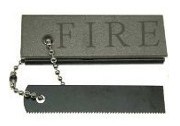Whether it’s a hurricane or a blizzard, a large-scale disaster can seriously disrupt distribution patterns. Unfortunately, it can also create situations that make quick relief distribution a necessity. The only way to maintain supply during a disaster is with detailed preparation and planning long before things go wrong. Below are five important factors to consider from both sides of the supply line.
1. Joint transport services. In case of a crisis, collaboration is key. One fleet may have lost vehicles, while another simply needs people behind the wheel. Aid organizations take advantage of joint transport services to use the best assets from every branch of the distribution, and this strategy works just as well for independent business owners. Companies should create partnerships in advance with local industries.
2. Driver technology. Certain types of fleet tracking software and hardware enable truck drivers to change their route on the spot with advanced GPS technology. If the original intended path is not passable, drivers can immediately determine the best (and shortest) alternative path. This ensures quick deliveries and safe drivers.
3. Change in attitude. Corporate priorities are cost cutting and following standard practices — as they should be. However, a disaster changes the rules. The focus should be on speed and security. Receiving packages in one piece and in a timely fashion is critical. In that same vein, businesses should practice openness and flexibility. Keeping everyone in the loop will maintain customer trust in the brand and possibly allow for new connections and assistance. Because disaster deliveries are unplanned and unpredictable, there are no closed loop tours, so fleet managers should be ready to instruct drivers at each leg of the trip.
4. Buyer responsibility. Leaving disaster preparedness completely to the vendor can result in miscommunication and delays. Buyers who depend on getting their product have two responsibilities: to have an agreed-on plan between themselves and the distributor in advance, and to be ready with reliable and trusted alternatives. If the vendor is unable to perform, buyers should have a backup in mind. In the case of a major disaster that affects supply, engineers should be on hand with an alternate material that will allow production to continue on schedule.
5. Criteria for international transport. In the most extreme cases, local aid can’t deliver the relief needed. If a town or company needs to seek international aid, there are certain criteria to rely on. First, an international transport provider should have demonstrated experience with emergency situations. A local office is also a huge boon, as it implies familiarity with both the landscape and local protocols. Finally, a varied fleet ensures reliability; more transportation options means better chances of a quick delivery.
Critical deliveries in extreme situations require not only planning, it also requires improved communication. Individuals well outside a field are suddenly involved in decision-making. Various government officials may need to approve routes before transport can be made. By having a sharable plan and a rough idea of who they will need to work with, companies can reasonably promise their customers that it will be business as usual.









